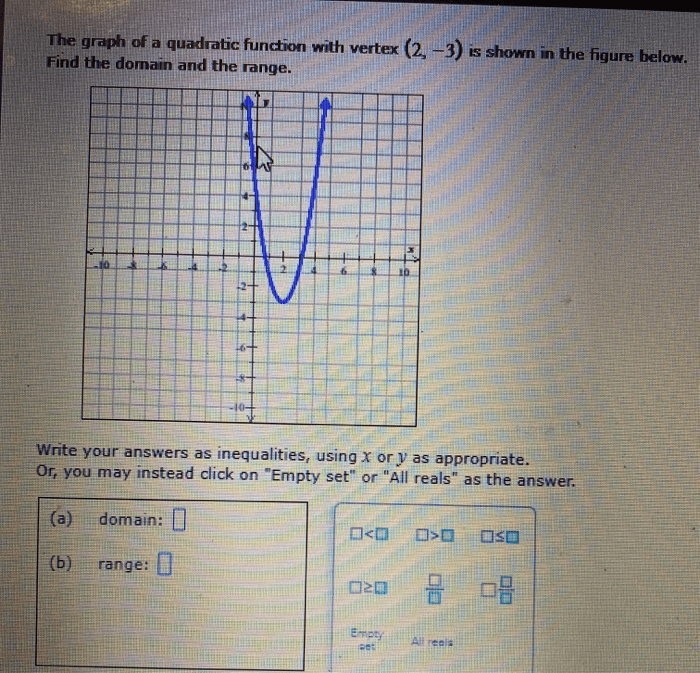Answer the questions below about the quadratic function and delve into the fascinating world of mathematics. This comprehensive guide will illuminate the concepts, applications, and intricacies of quadratic functions, empowering you with a deeper understanding of this fundamental mathematical tool.
From graphing techniques to solving methods and real-world applications, we will explore the multifaceted nature of quadratic functions, unveiling their significance in various fields.
Quadratic Functions: A Comprehensive Overview: Answer The Questions Below About The Quadratic Function

Quadratic functions are a fundamental class of mathematical functions that model a wide range of real-world phenomena. They are characterized by their distinctive parabolic shape and their ability to represent quadratic relationships between two variables.
Function Overview
A quadratic function is a polynomial function of degree 2, expressed in the standard form:“`f(x) = ax² + bx + c“`where a, b, and c are real numbers and a ≠ 0.
Graphing the Function
The graph of a quadratic function is a parabola, whose shape is determined by the values of a, b, and c. The vertex of the parabola, (h, k), represents the turning point of the graph and is given by:“`h =
b/2a
k = f(h)“`
Solving the Function
Quadratic functions can be solved for their roots, which are the values of x that make the function equal to zero. There are several methods for solving quadratic equations, including:* Factoring
- Completing the square
- Using the quadratic formula
Applications of Quadratic Functions
Quadratic functions have numerous applications in various fields, including:* Modeling projectile motion
- Calculating the area of parabolic shapes
- Designing bridges and arches
- Analyzing the trajectories of objects in physics
Advanced Concepts, Answer the questions below about the quadratic function
In more advanced mathematical contexts, quadratic functions can involve complex roots, which are non-real numbers that satisfy the quadratic equation. The discriminant of a quadratic function, given by b²
4ac, determines the nature of the roots
* If b²
- 4ac > 0, the roots are real and distinct.
- If b²
- 4ac = 0, the roots are real and equal.
- If b²
- 4ac < 0, the roots are complex conjugates.
Q&A
What is the standard form of a quadratic function?
The standard form of a quadratic function is ax^2 + bx + c, where a, b, and c are real numbers and a ≠ 0.
How do you graph a quadratic function?
There are several methods for graphing a quadratic function, including using the vertex, factoring, and completing the square.
What are the different methods for solving a quadratic function?
Quadratic functions can be solved using various methods, such as factoring, using the quadratic formula, or completing the square.

